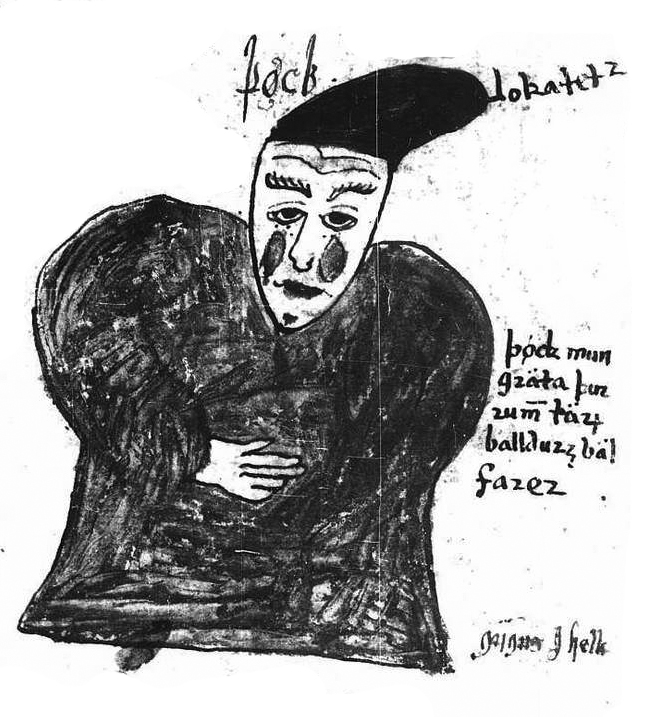1. Overview
Þökk (also Thökk), a figure in Norse mythology, is a jötunn (giantess) who plays a pivotal and negative role in the myth of Baldr's death. She is widely presumed to be the god Loki in disguise. Her refusal to weep for Baldr, after all other beings and things in the world had done so, directly caused Baldr to remain in the realm of Hel, preventing his return to the living.
2. Name and Identity
The name Þökk (ÞökkThökkNorse, Old) is an Old Norse and Icelandic word meaning "Thanks" or "Gratitude". This name carries a significant irony given her actions in the myth. Within the narrative of the Prose Edda, Þökk is strongly implied and generally believed to be Loki Laufeyarson in disguise. This interpretation is explicitly stated in the *Gylfaginning* section of the *Prose Edda*, which notes that "men deem that she who was there was Loki Laufeyarson, who hath wrought most ill among the Æsir".
3. Role in the Baldr Myth
Þökk's central role in Norse mythology is detailed in the *Prose Edda*, specifically in the section *Gylfaginning*. Her actions directly lead to the permanent stay of the god Baldr in the underworld.

After Baldr's death, the god Hermóðr rode to Hel on Sleipnir, Odin's eight-legged horse, to plead for Baldr's return. Hel, the ruler of the realm, agreed to release Baldr and allow him to return to the living, but only on the condition that all things in the world, living and inanimate, would weep for him.
The Æsir, the principal gods of the Norse pantheon, then dispatched messengers across the entire world to request that all beings and objects shed tears for Baldr. Remarkably, almost everything in the world, from humans and animals to stones and trees, wept for Baldr, indicating the universal love and sorrow for him. However, as the messengers were returning, having successfully completed their task, they encountered a giantess sitting in a cave. This giantess identified herself as Þökk.
The messengers implored Þökk to weep for Baldr, so that he might be released from Hel. Her response, however, was a stark refusal, delivered in a poetic stanza:
:Thökk will weep
:waterless tears
:For Baldr's bale-fare;
:Living or dead,
:I loved not the churl's son;
:Let Hel hold to that she hath!
This defiant refusal from Þökk meant that the condition set by Hel could not be fully met. Consequently, Baldr was forced to remain in the realm of Hel, unable to return to Asgard or the world of the living. The text of *Gylfaginning* explicitly concludes that the giantess Þökk was, in fact, Loki Laufeyarson, who had caused the most harm among the Æsir. This act solidified Loki's reputation as a malevolent trickster and a primary antagonist to the gods.
4. Sources
The primary source for the account of Þökk and her role in the Baldr myth is the *Prose Edda*, compiled by Snorri Sturluson in the 13th century. Specifically, her story is found in the section known as *Gylfaginning* (Chapter 49). While the poetic stanza spoken by Þökk is quoted within *Gylfaginning*, its original source is not explicitly recorded within the *Prose Edda* itself.
5. Related Concepts
Þökk's story is deeply intertwined with several key figures and concepts in Norse mythology:
- Baldr: The beloved god, son of Odin and Frigg, whose death and subsequent inability to return from Hel is the central event in which Þökk plays a crucial role.
- Loki: The trickster god, widely believed to be Þökk in disguise, who orchestrated Baldr's death and then prevented his resurrection, demonstrating his antagonism towards the other gods.
- Hel: Both the name of the underworld realm where the dead reside and the name of its ruler, a daughter of Loki. Þökk's refusal directly ensured Baldr's continued stay in this realm.
- Hermóðr: The god who rode to Hel to negotiate Baldr's release, acting as a messenger for the Æsir.
- Jötunn: A race of giants in Norse mythology. Þökk is identified as a giantess, although her true identity is believed to be Loki.
- Æsir: The principal pantheon of gods in Norse mythology, to which Baldr, Loki, Odin, Frigg, and Hermóðr belong. Þökk's actions represent a significant setback for the Æsir.
- Prose Edda: The 13th-century Old Norse textbook by Snorri Sturluson, which is the primary written source for the myth of Baldr's death and Þökk's involvement.
- Gylfaginning: The first part of the *Prose Edda*, containing the mythological narrative of the creation and destruction of the world and the stories of the gods, including the account of Baldr and Þökk.